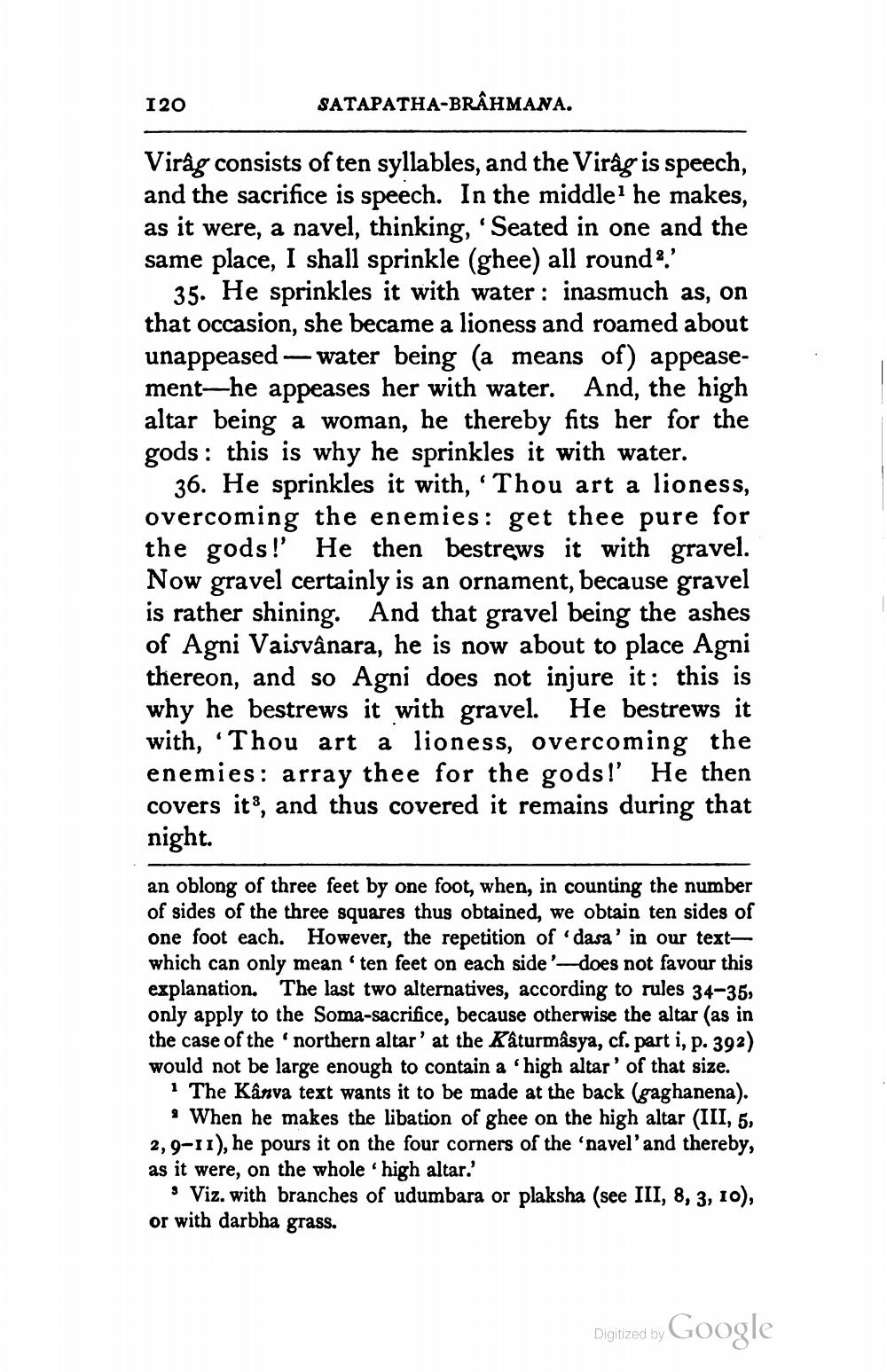________________
I 20
SATAPATHA-BRAHMANA.
Virág consists of ten syllables, and the Virág is speech, and the sacrifice is speech. In the middle' he makes, as it were, a navel, thinking, Seated in one and the same place, I shall sprinkle (ghee) all round.'
35. He sprinkles it with water : inasmuch as, on that occasion, she became a lioness and roamed about unappeased - water being (a means of) appeasement-he appeases her with water. And, the high altar being a woman, he thereby fits her for the gods: this is why he sprinkles it with water.
36. He sprinkles it with, Thou art a lioness, overcoming the enemies: get thee pure for the gods!' He then bestrews it with gravel. Now gravel certainly is an ornament, because gravel is rather shining. And that gravel being the ashes of Agni Vaisvânara, he is now about to place Agni thereon, and so Agni does not injure it: this is why he bestrews it with gravel. He bestrews it with, 'Thou art a lioness, overcoming the enemies: array thee for the gods!' He then covers it, and thus covered it remains during that night.
an oblong of three feet by one foot, when, in counting the number of sides of the three squares thus obtained, we obtain ten sides of one foot each. However, the repetition of dasa' in our textwhich can only mean'ten feet on each side'-does not favour this explanation. The last two alternatives, according to rules 34-35, only apply to the Soma-sacrifice, because otherwise the altar (as in the case of the northern altar' at the Kâturmâsya, cf. part i, p. 392) would not be large enough to contain a 'high altar' of that size.
1 The Kanva text wants it to be made at the back (gaghanena).
. When he makes the libation of ghee on the high altar (III, 5, 2,9-11), he pours it on the four corners of the 'navel'and thereby, as it were, on the whole high altar.'
· Viz. with branches of udumbara or plaksha (see III, 8, 3, 10), or with darbha grass.
Digitized by Google




